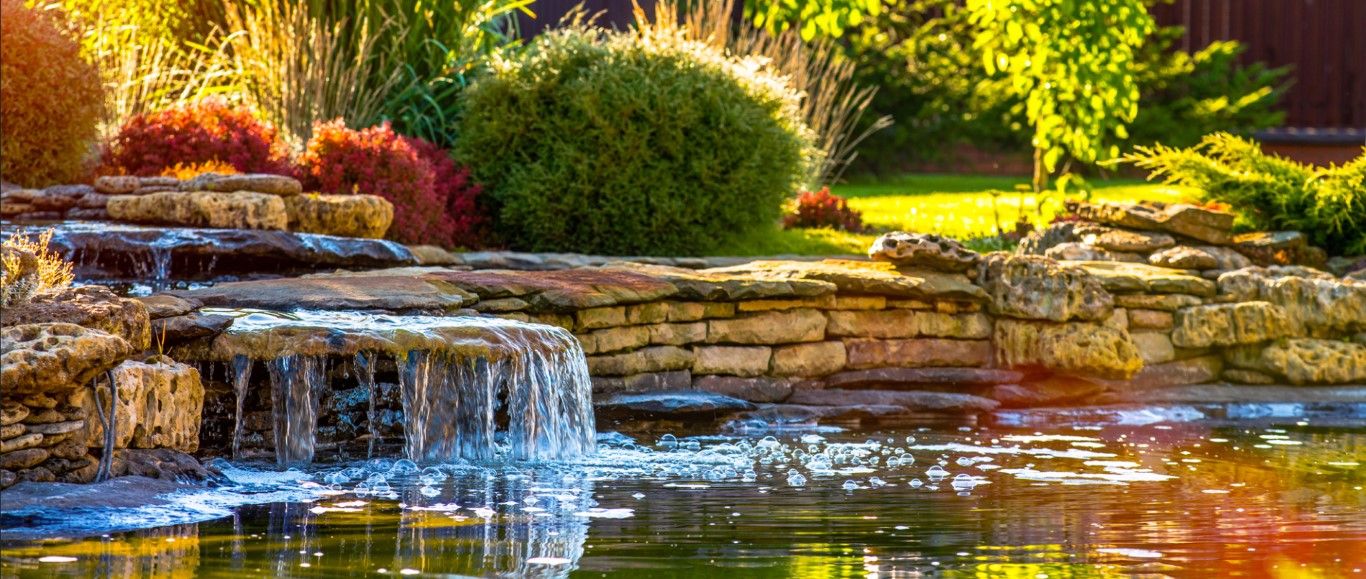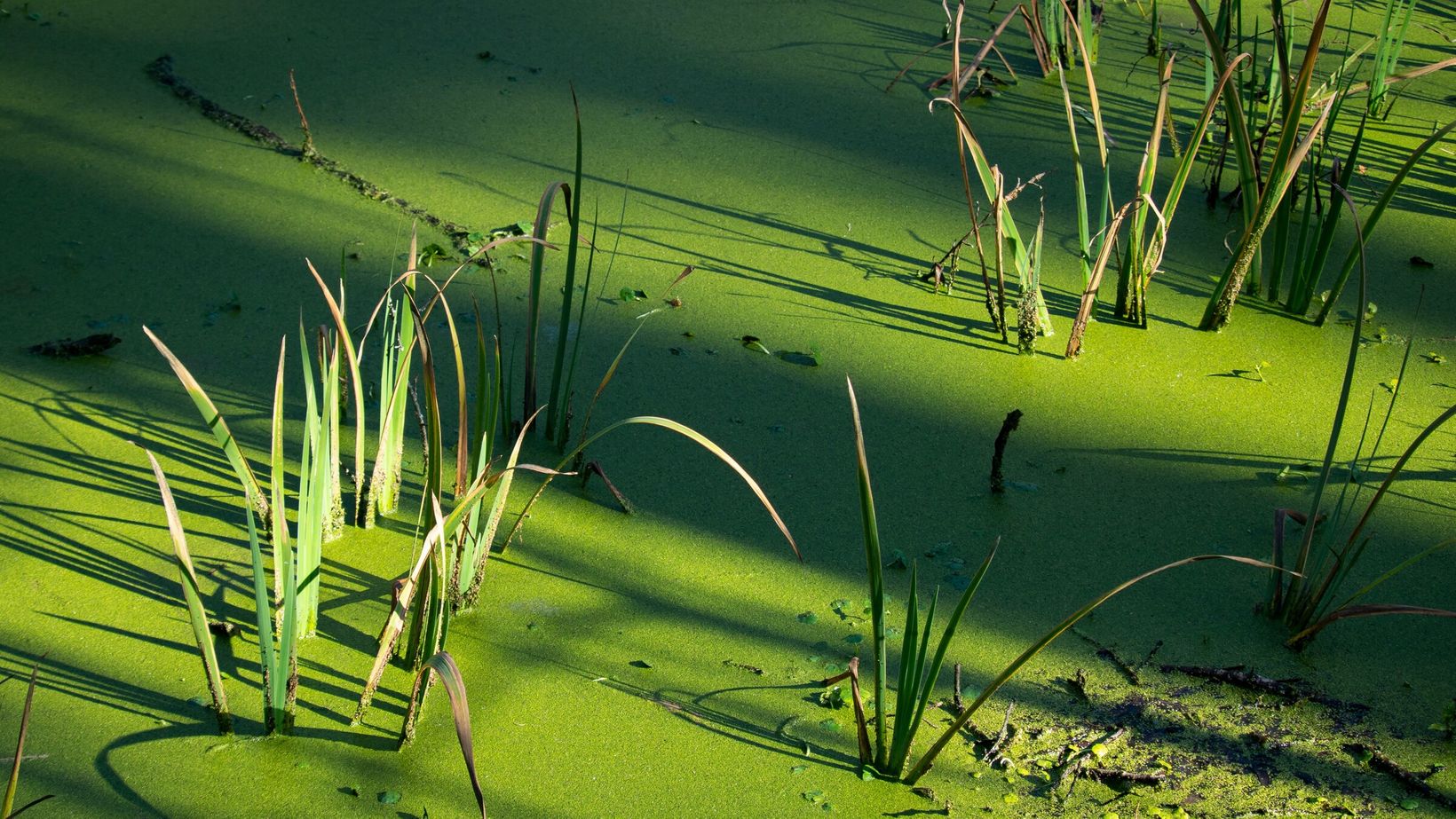How to: Treat and Manage Pond Algae
How to: Treat and Manage Pond Algae
Get the Guide: How to Identify, Treat and Manage Pond Algae
Before you panic upon seeing a buildup of algae in your pond, keep in mind that algae are a completely normal part of any organic pond ecosystem. A small amount of algae in your water feature is perfectly okay! In fact, it’s a sign of a healthy ecosystem. Algae only become a problem when the growth becomes excessive and therefore difficult to manage.
The main goal in keeping clear, healthy water is not to completely rid your pond of algae, but rather to keep it in balance with nature. Dealing with excess algae growth doesn’t have to be complicated. Avoid certain behaviours and incorporate a few treatments to keep it under control. Before treating, it’s important to understand the most common forms of algae seen in backyard water features. It’s also important to know the causes, prevention methods, and solutions to excessive algae growth.
In this guide, we identify two common types of pond algae, factors causing them to appear and how to manage them.
Green Water Algae
The cloudy green ‘pea soup’ water you might see in your garden pond or water feature is caused by a microscopic Planktonic alga, with the right conditions it can multiply very quickly. It is often worse during spring and summer due to excessive sunlight, however, other factors such as high nitrate levels and leaf debris/buildup also contribute to planktonic algae growth. Unlike other algae species that grow on the glass or on objects, green water algae float about your tank, pond or feature and multiply by the billions in a short period of time, in what's known as a "bloom".
Filamentous Algae
Hair algae, String algae and Blanketweed are all Filamentous algae, and have a stringy dark green appearance (photo on right). Filamentous algae are often found growing on rocks, waterfalls, free-floating, or attaching themselves to plants and root systems. They can be difficult to remove manually, as they are often tangled in plants and root systems. Aside from aesthetic issues, filamentous algae can also be dangerous for fish. Allowing filamentous algae to accumulate in a pond may lead to your fish dying caused by low dissolved oxygen concentrations.
What causes algae to appear?
Algae blooms can occur when a combination of suitable environmental conditions exist for abundant algal growth. High temperatures combined with stagnant water and nutrient overload usually results in excessive algae growth, including things like,
- Overfeeding or overstocking of fish,
- Leaves and debris from decayed matter on the floor of the pond,
- Excess sunlight,
- No or very few pond plants,
- Unlined or unpainted concrete pond,
- Lack of water movement and aeration.
So, how do you manage it?
Here's a few easy things you can do to manage the algae growth in your water garden.
Move and Aerate the Water
Run your pump as often as possible (6+ hours per day is best, even 24/7); this keeps the pond cooler and adds oxygen to the water.
Shade the Pond
Cover at least 60% of the water surface with plants to keep out sunlight and cool the water. Plants naturally filter and create the perfect environment for fish to feed, shelter and spawn. View our range of aquatic plants on our website.
Don't Overpopulate your Pond
Make sure you don't have too many fish in your pond. Fish waste produces Ammonia which in turn increases Nitrate levels (approximately 1x fish per 150 litres of water). Nitrate provides fuel for algae to grow.
Don't Overfeed Fish
While we're talking about fish, un-eaten food and decaying debris increases Nitrate and Phosphate levels.
Partial Water changes
Decrease Nitrate & Phosphate levels by doing a partial water change. Partial water changes are a good way to dilute contaminants in the pond quickly. For a partial water change, you drain less than half of the water (some pond owners opt for a 10% to 20% water change) and add fresh water to maintain water quality. This can be done every two to four weeks.
UV & Bio-Filter System
Eliminate Green Water/Planktonic Algae by installing a filtration system containing a UV light to sterilize the water. You can view our range of Bio-filters on our website.
We recommend testing your pond's PH level with a PH testing kit and treating issues with our range of bio-chemicals and pond conditioning products.
If you enjoyed this blog post, you might enjoy:



